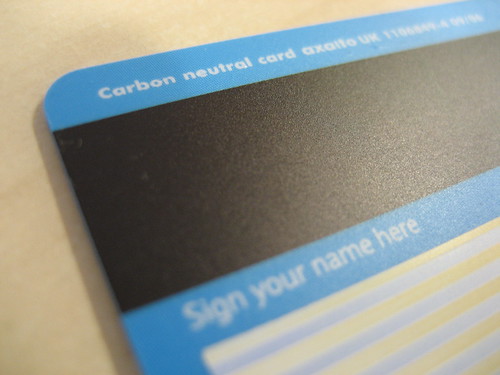A while ago it dawned on me what a ridiculous waste of resources the obligatory conference bag is. Plastic carrier bags are not the only bag-related problem we face. Every time you go to a conference you get a bag you really don’t need or want. They’re often poor quality and fall apart quite quickly. So what would be a better approach showing some social responsibility. My friend Ed then came up with a great idea: One Laptop Bag Per Child. Nigel James had crystallised things for a lot of us. SAP to its great credit understood what we were talking and did something about it.
It seems like the shoe has finally dropped, that a lot of schwag is actually drek. I got news from Duke a couple of days ago: This year’s JavaOne backpack is made out of materials that can be recycled.”
Well now comes of more bag sanity from Web 2.0 expo. Cote’ just fired over a link from news.com.
Now that is a lot of gapingvoid designed bags from SXSWi. So apparently Web 2.0 Expo is trying to lessen the environmental impact of the throwaway Events industry.
“It’s a bit hard on the old conscience being employed in an industry (that) creates as much waste as the events industry,” wrote Web 2.0 Expo general manager and co-chair Jennifer Pahlka. “Much is made of the carbon footprint of an event, but I’m well aware of an even more daunting measure, the ecological footprint, which looks at the sum total of resources used. Take a look at all that goes into producing an event the size of Web 2.0 Expo (including what our sponsors, exhibitors, and speakers bring) and you can either get depressed or try to tackle the problem. We’re doing both… We have a long way to go, but I thought I’d share some of the changes we’ve implemented this year.”
Among the changes Pahlka mentioned: Using 100 percent recycled materials for the program guide, attendee direct mail, attendee bag, and event signage; reducing the program guide by a third; recycling badges; providing water coolers and encouraging attendees to bring their own bottles; and more.
Of course, even Pahlka acknowledged that the efforts are only a start. And I do wonder how many attendees will bring their own bottles or recycle their program guides–another initiative.
“One thing I’ve become painfully aware of is that recycling is a good step, but not generating the waste in the first place is orders of magnitude more beneficial to the earth,” Pahlka wrote. “That’s why ‘reduce’ should always be the real goal. We’re working with sponsors on further steps for reducing, and with our vendors on all three Rs. In some areas, we’re aware we’re taking risks. For instance, we’ve tried to limit the print run of the program guide this year, so there’s a chance we’ll run out if people don’t follow our lead and leave their used guides for others to reuse. We hope you will all be tolerant of any errors we make in support of this effort.”
Well done Event Organiser people!









